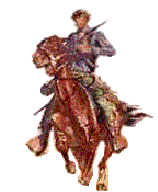Marion Military Institute | Battle of Perryville

Battle of Perryville

this link has the map and pics of the generals
Battle of Perryville, Kentucky
October 8, 1862
Below are the inscriptions from the Kentucky State Historical markers.
I am sure we lost several men from Company F in this battle but at this point I only know the names of the following:
Sergeant J W Deshazo
Private Private Cline
(Marker Number: 58)
County: Boyle
Location: Perryville Battlefield State Historic Site, KY 1920
Description: October 8, 1862. Here 16,000 Confederates under General Braxton Bragg fought 22,000 Federals under General Don Carlos Buell. Bragg, facing superior forces, withdrew. Union casualties, 4211; Confederate, 3396.
Battle of Perryville, Oct. 8, 1862
(Marker Number: 553)
County: Boyle
Location: Perryville, US 68, 150
Description: The battle was brought on by Confederate Lieut. Gen. Braxton Bragg as a delaying action to insure safe withdrawal of a huge wagon train of supplies and to enable him to effect a junction with the army of Maj. Gen. E. Kirby Smith in the vicinity of Versailles.
In overall command of the Union Army (Army of the Ohio) was Maj. Gen. Don Carlos Buell, with Maj. General George H. Thomas second in command. Buell had three corps. First: Maj. Gen. Alexander McDowell McCook. Second: Maj. Gen. Thomas L. Crittenden. Third: Maj. Gen. Charles C. Gilbert.
In overall command of the Confederate Army (Army of the Mississippi) was Gen. Bragg, with Maj. Gen. Leonidas Polk commander of the Right Wing and Maj. Gen. William J. Hardee of the Left Wing. Bragg had three divisions: Maj. Gen. Benjamin F. Cheatham’s; Brig. Gen. J. Patton Anderson’s; and Maj. Gen. Simon Bolivar Buckner’s.
The main action began at 2:00 p.m. with a fierce charge by Brig. Gen. John A. Wharton’s cavalry, on the extreme Confederate right, followed immediately by a rapid advance of Cheatham’s entire line. Simultaneously, Buckner’s and Anderson’s moved forward, amid heavy cannonading from numerous batteries on both sides.
Cheatham’s charge caught a large number of McCook’s men (many fresh enlistees) unaware and off guard, far in advance of their lines, seeking water in the vicinity of Doctor’s Creek. Both Cheatham’s and Buckner’s divisions drove McCook’s men back to their former ill-formed positions and, after heavy, often desperate, hand-to-hand fighting, dislodged his entire corps, pushing him back a distance of approximately a mile west of the Creek. On the Con-federate left, however, Anderson was unable to dislodge the division of Brig. Gen. Philip H. Sheridan, timely enforced by Brig. Gen. Albin Schoepf’s division.
Late afternoon, Anderson’s advancing left was struck by a determined charge of Col. William P. Carlin’s brigade (R. B. Mitchell’s division, Gilbert’s Corps) between the Springfield and Lebanon roads, the charge carrying through Perryville and out on the Danville and Harrodsburg roads. Toward dusk, desperate staying actions by brigades of Col. John C. Stark-weather (Rousseau’s division) and Col. Michael Gooding (Mitchell’s division) enabled McCook to stabilize his battered corps along a line immediately beyond the Russell house and Benton road. In his favor too were the coming of darkness and near exhaustion of the Confederates.
General Buell, headquarters at the Dorsey house on Springfield road, was not aware that the battle was in progress until 4:00 p.m., too late to have Crittenden’s corps, along Lebanon road, pivot around in an attempt to envelop the enemy forces.
After nightfall, Bragg finally realized that his small force faced practically Buell’s entire army. This knowledge caused him to order withdrawal at midnight toward Harrodsburg. On the whole, the Con-federate troops were better handled and used than these of the Union. The battle ended as a tactical victory for Bragg; a strategic victory for Buell, who held the field.
The Confederate commander employed only 16,000 men and sustained 3,396 casualties; 510 killed, 2,635 wound-ed, and 251 missing. Buell used between 22,000 and 28,000; sustained 4,421 casualties; 845 killed, 2,851 wounded and 515 captured or missing. The battle was one of the fiercest and bloodiest of modern times.
Had Buell and Bragg been better informed and more aggressive, the battle of Perryville might have been the decisive engagement of the Civil War in the West. After this battle, the Confederates never returned to Kentucky in great force; the state remained firmly in the Union.